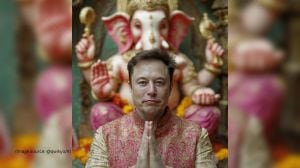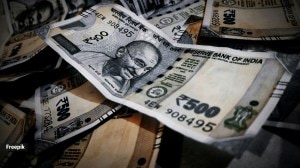Explained Books | The story of Humayun, beyond his failure and exile
Humayun was a complex, fascinating personality. Ebba Koch's account stitches together his life, his campaigns, his exile in Iran, and his military and diplomatic successes, which "enabled him to regain the Mughal throne in Hindustan".
 Ebba Koch; cover of her book The Planetary King
Ebba Koch; cover of her book The Planetary King In popular consciousness, Humayun, the son of Babur and the second Mughal emperor, is perhaps best known for the tomb dedicated to him in Delhi. He is one among the six great Mughals but people are usually not sure what his claim to greatness is.
Babur was the founder of the dynasty, Akbar the inclusive king, and Jahangir, although overshadowed by both his father and his son, is remembered as an emperor in whose reign peace, prosperity, and the arts flourished.
Shah Jahan was the master builder who gave India its most recognised monument, the Taj Mahal. Under Aurangzeb, the empire expanded to its farthest boundaries.
But not many know how to place Humayun on this lofty list. This is what Ebba Koch, one of the greatest authorities on the art, architecture, and culture of Mughal India, sets out to do in her new book, The Planetary King: Humayun Padshah, Inventor and Visionary on the Mughal Throne.
Koch, who has been a professor at the Institute of Art History in Vienna and has taught at Oxford and Harvard, is advisor to the Aga Khan Trust for Culture.
“He is chiefly remembered as a political and military failure, because he lost back to his rival, the Afghan Sher Shah, whom Babur had conquered in India, and had to seek refuge in Iran and fight in Afghanistan to regain his throne in Delhi. He did not write his autobiography, nor had he a historian like his son Akbar’s Abu’l Fazl to glorify him; and what his historian Khwandamir recorded is so eccentric that it eludes general comprehension,” writes Koch.
The reign of Humayun, she says, “is generally framed within the notions of failure and exile”.
But Humayun was a complex, fascinating personality. Koch’s account stitches together his life, his campaigns, his exile in Iran, and his military and diplomatic successes, which “enabled him to regain the Mughal throne in Hindustan”. Much is learnt about Humayun in retrospect, from the account of Akbar’s historian.
Humayun was a man of many interests. He was fond of books and took a portable library with him on his travels. In 1555-56, he rebuilt the library in Purana Qila, from the stairs of which he is said to have fallen to his death. He also had an abiding interest in astronomy, astrology, mathematics, occultism, and architecture.
“Besides astrological augury, Humayun would resort to bizarre forms of prognostication, especially before military operations, to learn about their outcome or to ensure their success,” writes Koch. Of the 273 illustrations featured in the book, one, taken from the Akbarnama, shows a white cock perched on Humayun’s shoulder, which is seen as a good omen for his Badakhshan campaign of 1548.
Humayun’s favourite occult science was onomancy, divination based on names. “Humayun’s ability to guess people’s names successfully inspired him later to reorganise his court, and he had such a strong belief in the power of numbers associated with letters that he founded his new city Dinpanah at Delhi on the date of the chronogram found by Maulana Shihab al-Din.”
The Planetary King contributes to furthering the understanding of Humayun, often just “a hyphen between two extraordinary monarchs”, Babur and Akbar.
Title | The Planetary King: Humayun Padshah, Inventor and Visionary on the Mughal Throne
Author: Ebba Koch
Publisher: Aga Khan Trust for Culture and Mapin Publishing
Pages: 384 pages


- 01
- 02
- 03
- 04
- 05




































